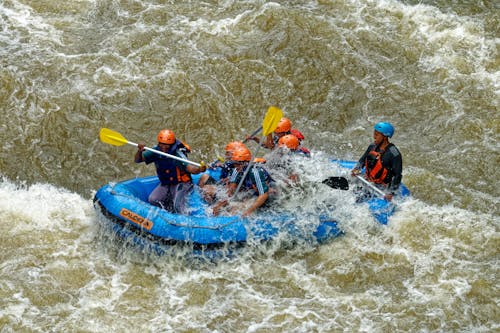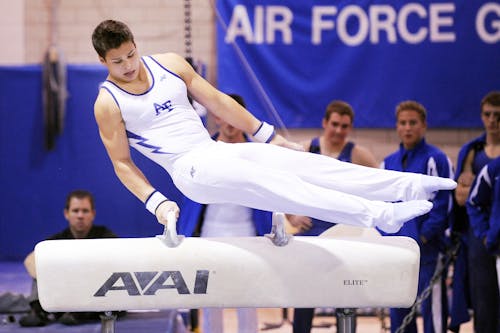 |
| Rafting |
In people and different bipeds, strolling is commonly recognized from running in that just a single foot at any given moment leaves contact with the ground and there is a time of twofold help. Rafting Conversely, running starts when the two feet are off the ground with each progression. This qualification has the status of a formal necessity in aggressive strolling occasions. For quadrupedal species, there are various steps which might be named strolling or running, and qualifications Rafting dependent on the nearness or nonattendance of a suspended stage or the quantity of feet in contact whenever don't yield mechanically address classification. The best strategy to recognize strolling from running is to gauge the stature of an individual's focal point of mass utilizing movement catch or a power plate at midstance. Amid strolling, the focal point of mass achieves a most extreme stature at midstance, while amid running, it is then at least. This refinement, be that as it may, just remains constant for velocity over dimension or around level ground. For strolling up evaluations above 10%, this qualification never again holds for a few people. Definitions dependent on the level of the walk amid which a foot is in contact with the ground (found the middle value of over all feet) of more prominent than half contact compares well with ID of 'modified pendulum' mechanics and are Rafting characteristic of strolling for creatures with any number of appendages, despite the fact that this definition is incomplete. Running people and creatures may have contact periods more prominent than half of a step cycle when adjusting corners, running tough or conveying loads. Rafting
Speed is another factor that recognizes strolling from running. Despite the fact that strolling rates can change extraordinarily relying upon numerous variables, for example, tallness, weight, age, Rafting landscape, surface, stack, culture, exertion, and wellness, the normal human strolling speed at Rafting crosswalks is about 5.0 kilometers every hour (km/h), or about 1.4 meters every second (m/s), or about 3.1 miles every hour (mph). Explicit investigations have discovered person on foot strolling speeds at crosswalks running from 4.51 kilometers every hour (2.80 mph) to 4.75 kilometers every hour (2.95 mph) for more established people and from 5.32 kilometers every hour (3.31 mph) to 5.43 kilometers every hour (3.37 mph) for more youthful individuals; an energetic strolling rate can be around 6.5 kilometers every hour (4.0 mph). Champion racewalkers can average in excess of 14 kilometers for every hour (8.7 mph) over a separation of 20 kilometers (12 mi). Rafting
A normal human tyke accomplishes autonomous strolling capacity at around 11 months old. Rafting
Medical advantages
Fundamental article: Physical exercise Rafting
Ordinary, energetic exercise of any sort can enhance certainty, stamina, vitality, weight control and future and diminish stress. It can likewise decrease the danger of coronary illness, strokes, diabetes, hypertension, gut malignant growth and osteoporosis. Scientific investigations have additionally demonstrated that strolling, other than its physical advantages, is additionally valuable for the brain, enhancing memory aptitudes, learning capacity, focus and conceptual reasoning, just as improving spirits.[clarification needed] Sustained strolling sessions for a base time of thirty to a hour daily, five days seven days, with the right strolling posture, lessen wellbeing dangers and have different Rafting generally speaking medical advantages, for example, decreasing the odds of malignant growth, type 2 diabetes, coronary illness, uneasiness issue and depression. Life anticipation is additionally expanded notwithstanding for people experiencing corpulence or hypertension. Strolling additionally enhances bone wellbeing, particularly fortifying the hip bone, and bringing down the unsafe low-thickness lipoprotein (LDL) cholesterol, and raising the valuable high-thickness lipoprotein (HDL) cholesterol. Studies have discovered that strolling may likewise help counteract dementia and Alzheimer's. Rafting
The Centers for Disease Control and Prevention's reality sheet on the "Relationship of Walking to Mortality Among U.S. "Strolling protracted the life of individuals with diabetes paying little respect to age, sex, race, weight list, time span since determination, and nearness of complexities or Rafting utilitarian limitations."[10] It has been recommended that there is a connection between the speed of strolling and wellbeing, and that the best outcomes are acquired with a speed of more than 2.5 mph (4 km/h). Rafting
Governments presently perceive the advantages of strolling for mental and physical wellbeing and are effectively promising it. This developing accentuation on strolling has emerged on the grounds that individuals walk less these days than beforehand. In the UK, a Department of Transport report[12] found that between 1995/97 and 2005 the normal number of walk trips per individual fell by 16%, from 292 to 245 every year. Numerous experts in neighborhood specialists and the NHS are utilized to end this decay by guaranteeing that the constructed condition enables individuals to walk and that there are strolling openings accessible to them. Experts attempting to support strolling come principally from six areas: wellbeing, transport, condition, schools, game and amusement, and urban structure. Rafting
One program to energize strolling is "The Walking the Way to Health Initiative", Rafting composed by the British walkers affiliation The Ramblers, which is the biggest volunteer driven strolling plan in the United Kingdom. Volunteers are prepared to lead free Health Walks from network settings, for example, libraries and specialists' medical procedures. The plan has prepared more than 35,000 volunteers and have more than 500 plans working over the UK, with a great many individuals strolling each week. another association called The site has a long range interpersonal Rafting communication viewpoint to enable experts and people in general to make inquiries, post news and occasions and speak with others in their general vicinity about strolling, just as a "walk now" choice Rafting to discover what strolls are accessible in every area. Comparative associations exist in different nations and as of late a "Mobile Summit" was held in the United States. This "assembl[ed] thought-pioneers and influencers from business, urban arranging and land, [along with] doctors and general wellbeing authorities", and others, to talk about how to make American urban areas and networks places where "individuals can and need to walk". Rafting











